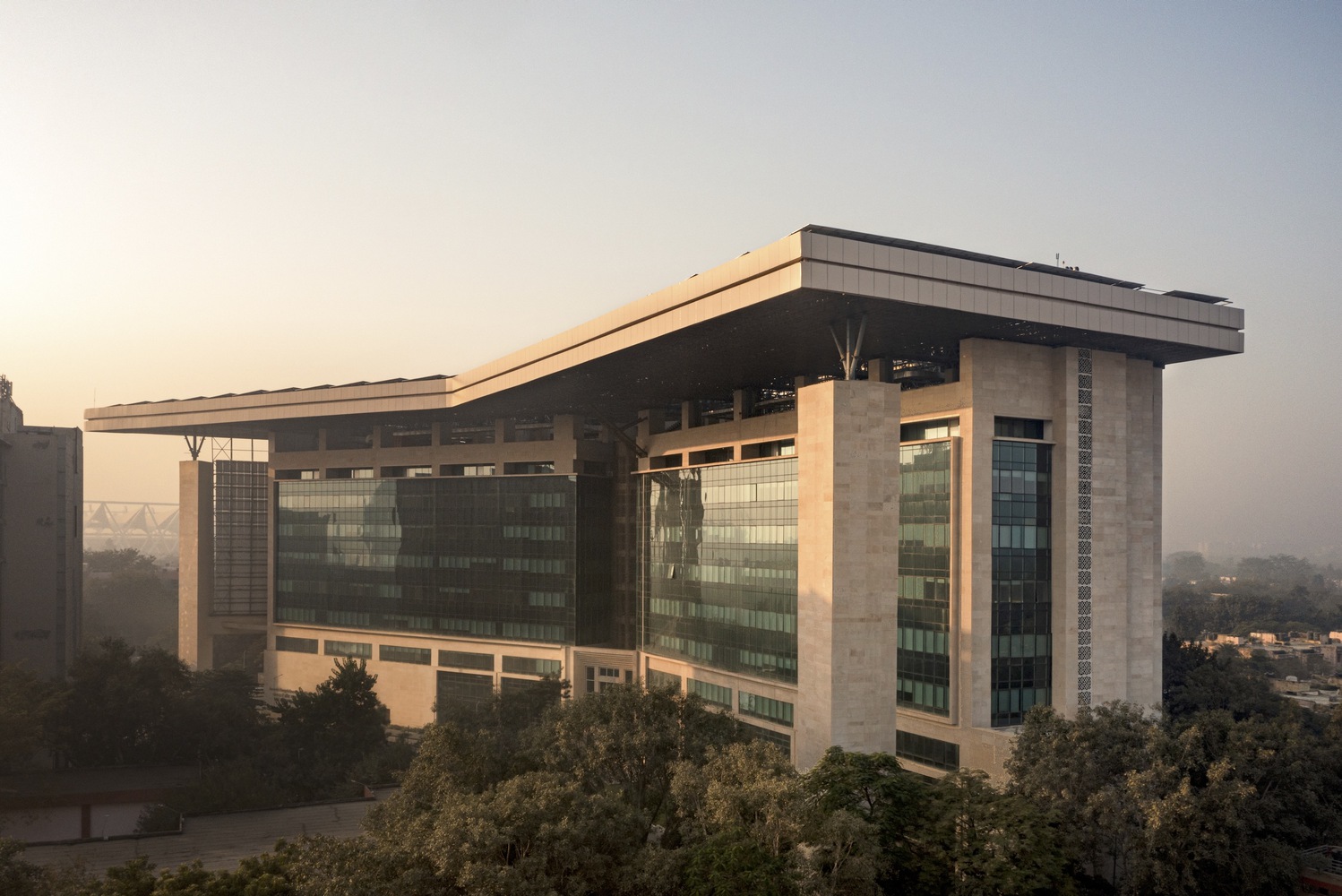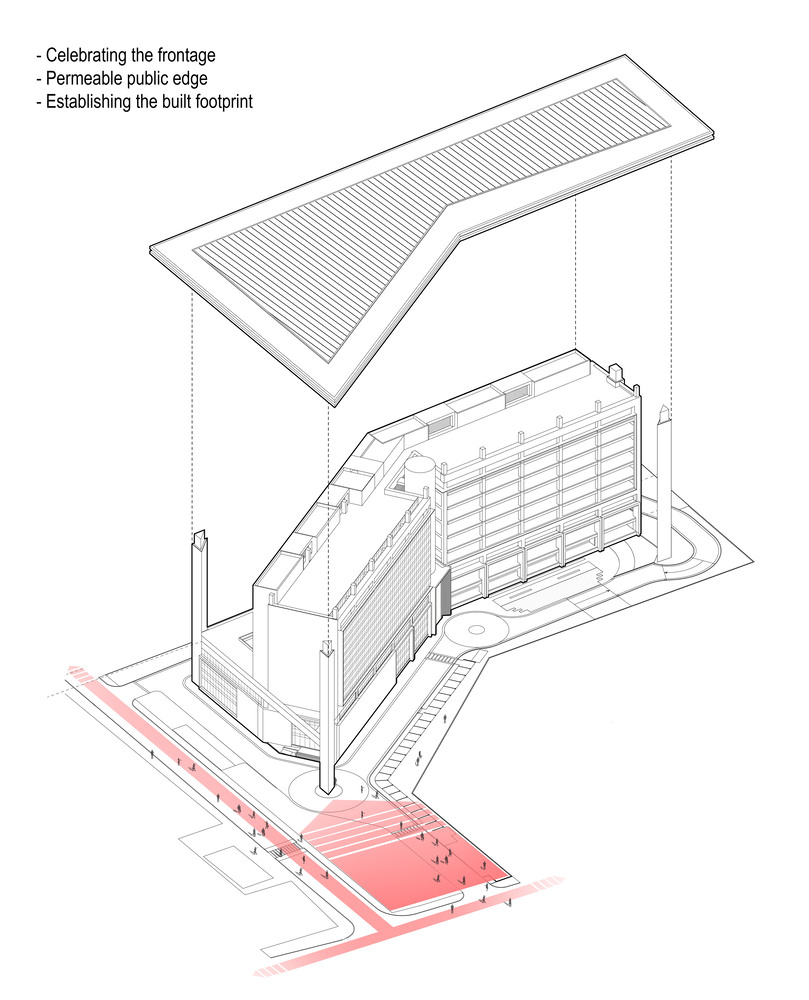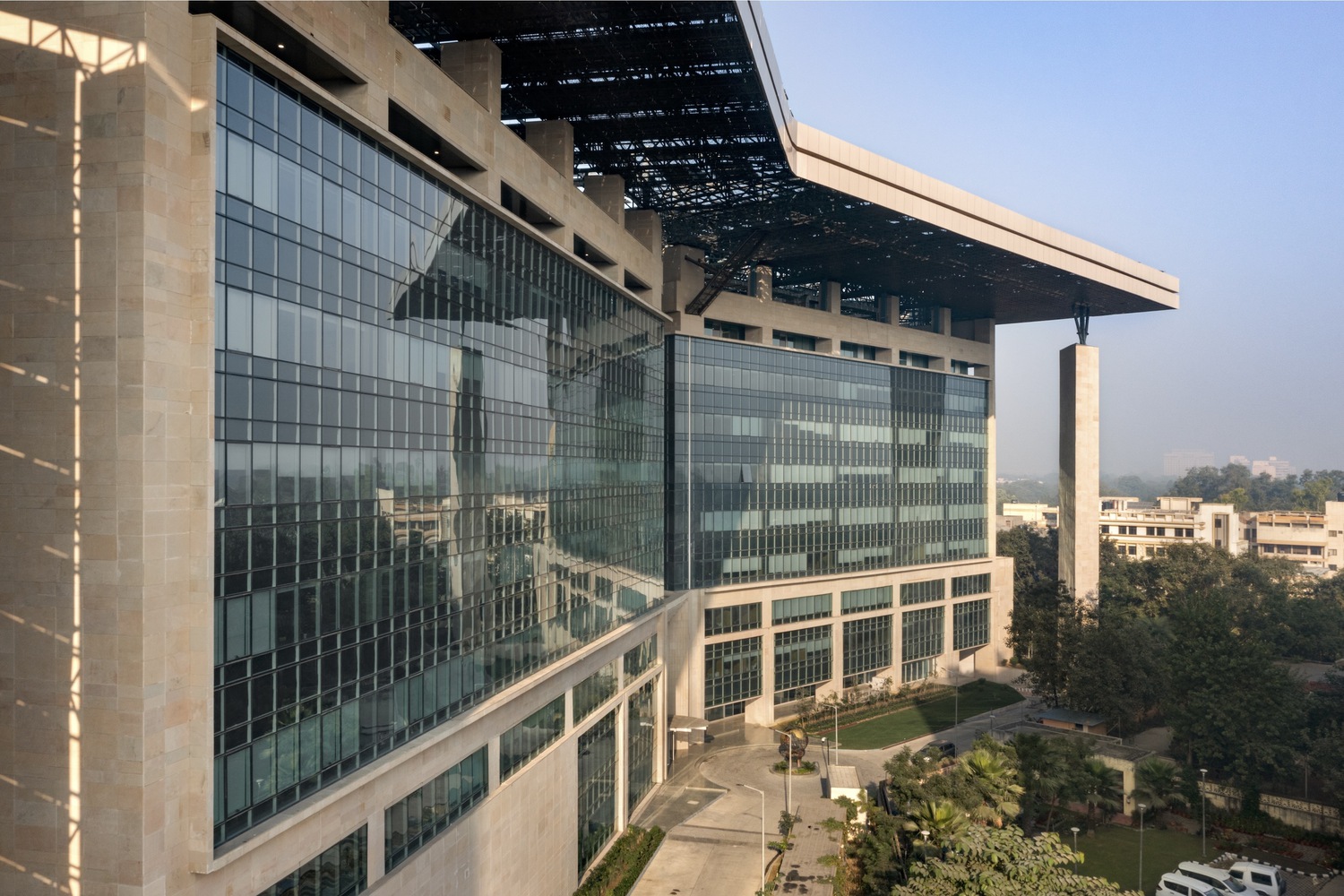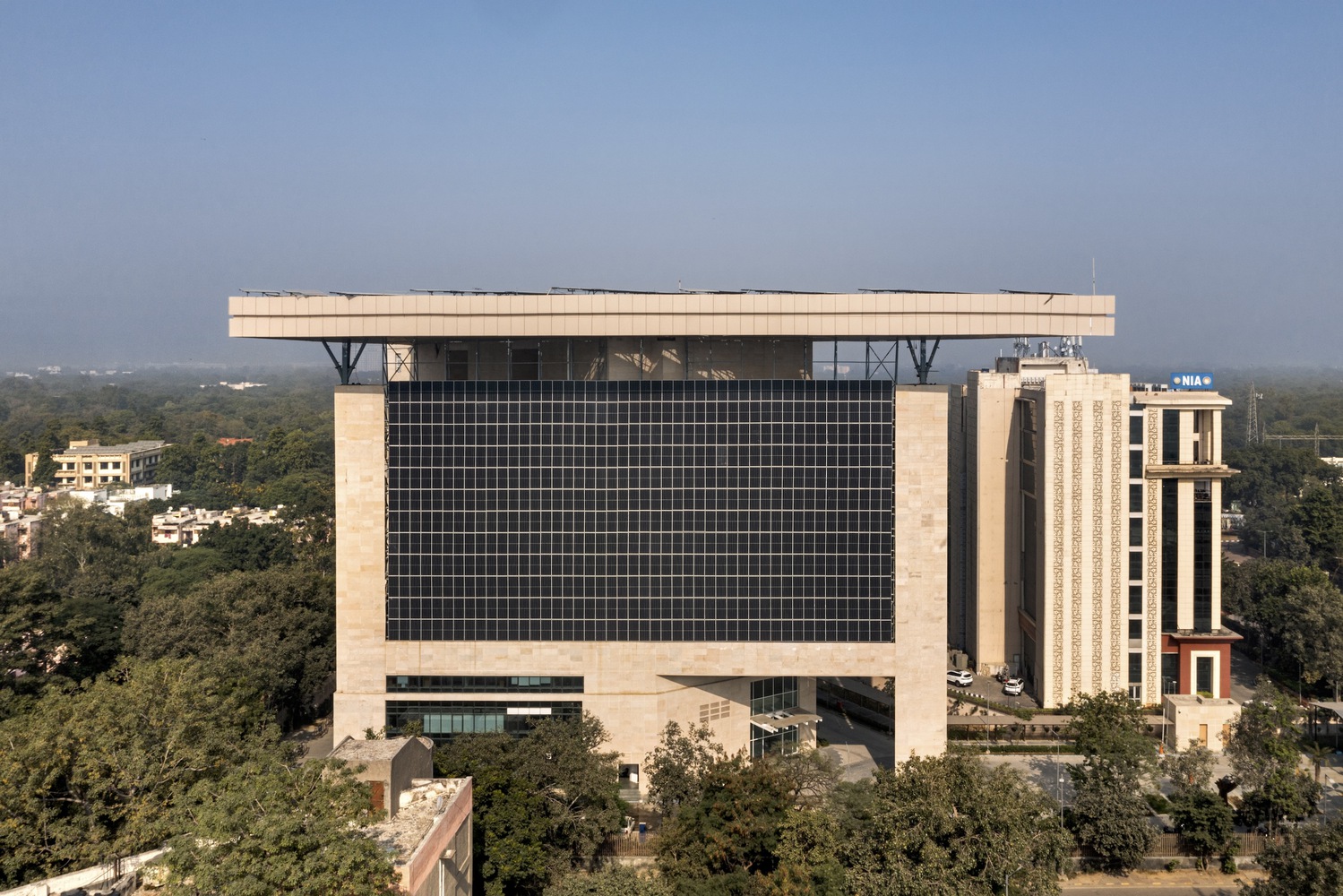Atal Akshaya Urja Bhavan, New Delhi
Summary
| Location | New Delhi |
| Coordinates | 28°35’20.0″N 77°13’48.3″E |
| Occupancy Type | Office |
| Typology | New Construction |
| Climate Type | Composite |
| Project Area | 38147 m2 |
| Date of Completion | 2022 |
| Grid Connectivity | Grid-Connected |
| EPI | 47 kWh/m2/yr |
| Architect | Edifice Consultants Pvt. Ltd |
| MEP Design Guidance | Sunil Nayyar Consultants Pvt. Ltd. |
| Structural Consultants | Vintech Consultants |
| Landscape Consultants | Design Cell |
Atal Akshay Urja Bhawan, a net-positive energy building functions as the headquarters of the Ministry of New and Renewable Energy (MNRE).
Recognized by GRIHA, the building serves as an exemplary government office building. It showcases the Ministry’s mission to encourage future development that incorporates sustainable principles and integrates renewable energy systems into the buildings.






